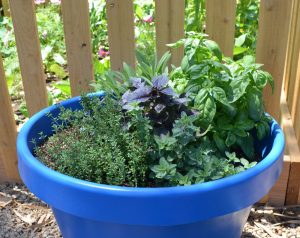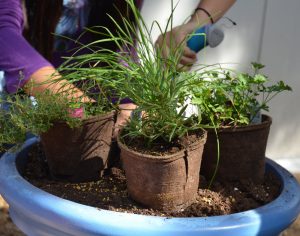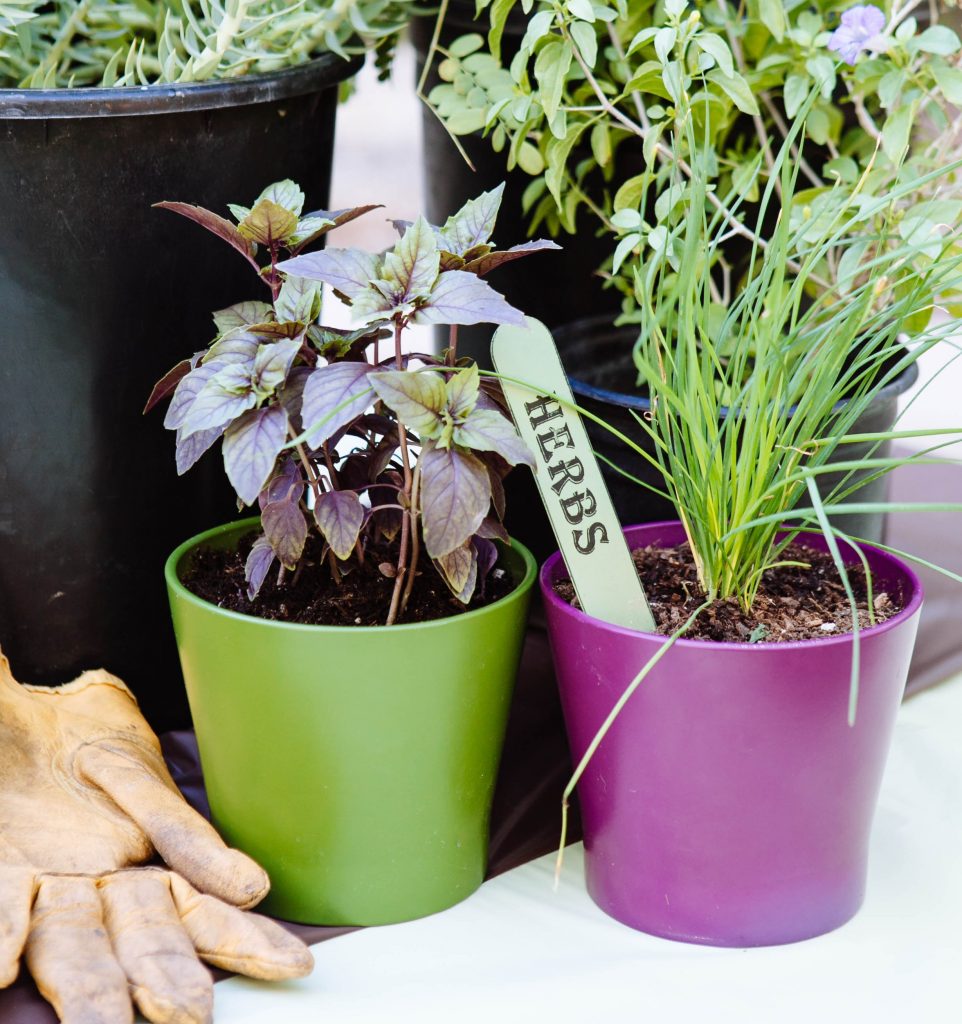Do you enjoy using fresh herbs when you cook? If so, you probably know how expensive they can be. What if fresh herbs were as close as your garden? Herbs are easy to grow and aren’t fussy. You may be surprised to find that herbs make great container plants and are a great alternative to flowering annuals.
So, why should you replace your flowering annuals with herbs?
- Herbs need less water and fertilizer than flowers and are more resistant to insect pests.
- Their varying leaf colors and shapes aren’t just edible, they are beautiful too!
- Herbs can handle the extremes of winter and summer temperatures better than many seasonal flowering annuals.
- Herbs can produce their own pretty flowers.
- Fresh herbs are just a few steps away when you need them in the kitchen.
Many people are beginning to skip planting flowers in pots in favor of edible plants such as fruit, vegetables, and herbs, which can make attractive container plantings. Herbs are a great container choice for the drought-tolerant garden because they need less water than most edible plants.
Are you ready to create your own herb container?
1. Select a location that gets 6+ hours of sun. Herbs do well in full sun but avoid areas that receive hot, afternoon sun.
2. Choose a container that’s at least 2 feet wide. The larger the pot, the better, since soil temperatures in containers can get very hot in the summer, which impedes root growth.
3. Fill the container with planting or potting mix. These are specially formulated for container growing and hold onto the right amount of water without becoming soggy, which can happen with potting soil.
4. Add a slow-release fertilizer before planting. Like all plants grown in containers, herbs need fertilizer to grow their best but require less than flowering annuals.
5. Decide which herbs to grow. You don’t have to plant all the  same herbs – in fact, it’s more fun and attractive to plant a variety of herbs. Chives, cilantro, dill, and parsley are cool-season herbs while basil is a warm-season herb. In low desert climates, oregano, rosemary, sage, and thyme can be grown all year. Have fun mixing the different shapes and colors of herbs where their varying shades and leaf shapes will create an attractive contrast. You may want to create a container filled with a variety of different basils or one filled with herbs used in Italian cooking. For more information, you can find a list of herbs and growing tips here.
same herbs – in fact, it’s more fun and attractive to plant a variety of herbs. Chives, cilantro, dill, and parsley are cool-season herbs while basil is a warm-season herb. In low desert climates, oregano, rosemary, sage, and thyme can be grown all year. Have fun mixing the different shapes and colors of herbs where their varying shades and leaf shapes will create an attractive contrast. You may want to create a container filled with a variety of different basils or one filled with herbs used in Italian cooking. For more information, you can find a list of herbs and growing tips here.
6. Care for your herb garden. Water deeply when the top inch of soil is almost dry. It’s best to water herbs near the soil’s surface since they don’t like to get their foliage wet. Reapply a slow-release fertilizer every 3 months.
Want to learn more about growing herbs in the desert Southwest? Check out these resources:
Lowe’s Desert Gardening: Tough Herbs for a Tough Climate
Noelle Johnson is an urban horticulturist, Certified Arborist and freelance garden-writer who helps people create beautiful, low-maintenance gardens with helpful advice on her blog www.azplantlady.com. Basil is her favorite herb to grow and she uses it to make basil salt for her favorite Italian dishes. When she is not writing or helping other people with their landscapes, you can find her “playing” outside growing fruits and vegetables, and planting flowering shrubs and maybe a cactus or two.


